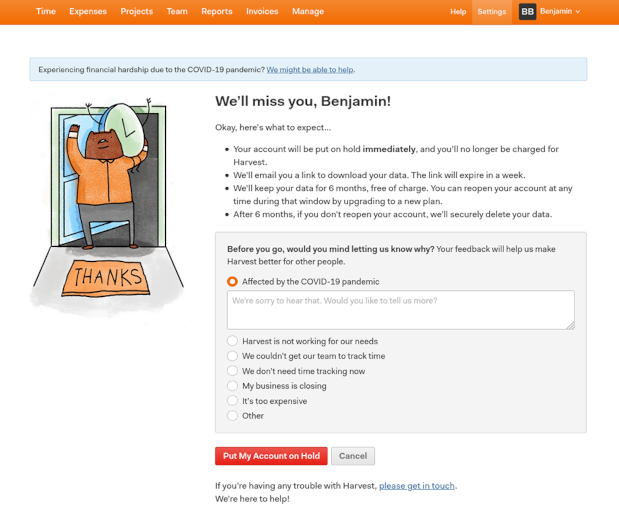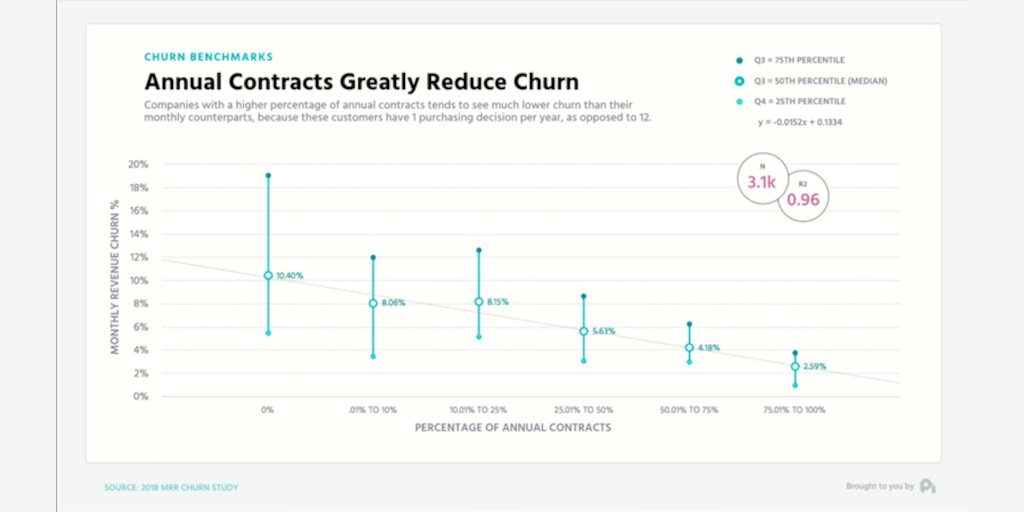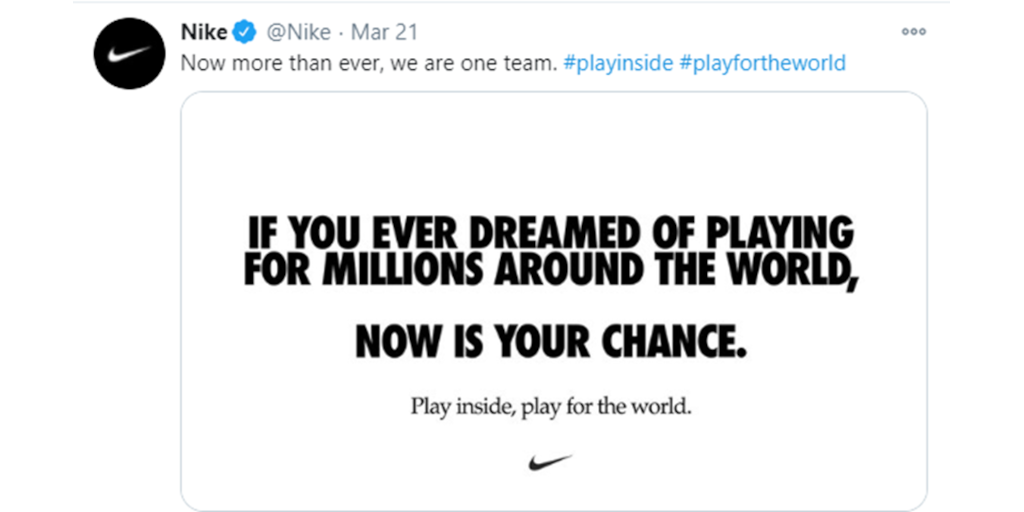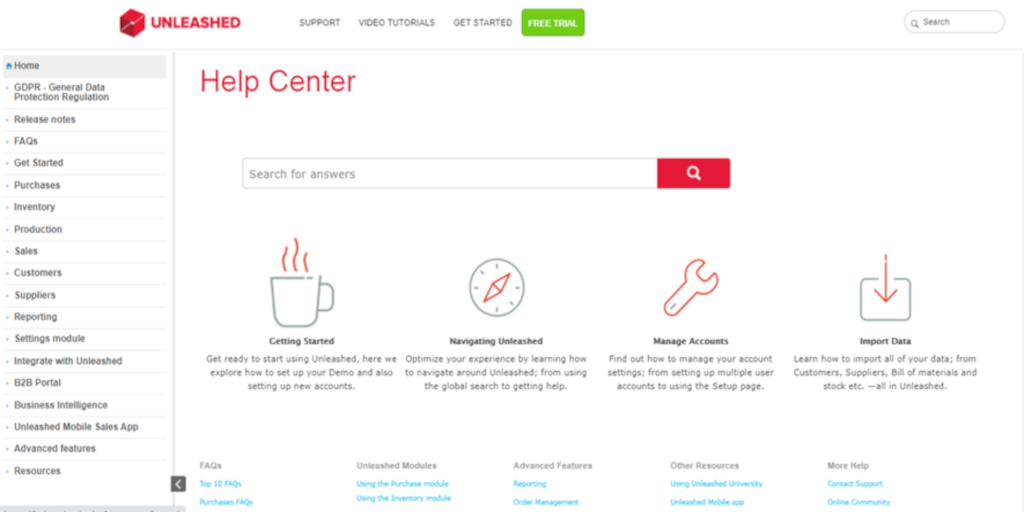
This is a guest post by Brayn Wills, the current Knowledge Management Specialist at ProProfs knowledge base. He is responsible for creating unique and relevant content on the knowledge base and keeping track of the latest developments in the realm of knowledge management. In his free time, he is either reading a new book or exploring offbeat destinations.
When a crisis strikes, it brings along daunting challenges that require businesses to reevaluate their strategies. One such significant challenge is customer churn. It can impact a business drastically if left unchecked.
Statistics show that, on average, most companies experience a monthly churn rate of 7.5%. If left unchecked, this can be catastrophic for a company’s bottom line.
A rapidly shrinking customer base means reduced profits that can have a severe impact on an organization, especially during a crisis. What’s more, crisis situations tend to exacerbate the root causes of churn, meaning businesses need to be extra responsive and attentive to their customers during these times.
While you cannot prevent all customers from leaving your company, you certainly can take concrete steps to keep customer churn in control.
In this post for Process Street, I will cover:
- What is customer attrition?
- Customer expectations and mindset during a crisis
- 6 Effective ways to reduce customer attrition
- How to provide extra value to customers during a crisis
- Move beyond promotion to meet customer expectations
- Customer retention solutions with Process Street
Read on to uncover the pragmatic ways to reduce customer churn during a crisis by understanding and providing value to your customers.
What is customer attrition?
Customer attrition (or customer churn) is the number of customers your company has lost during a given period of time. If you want to calculate your attrition rate for the quarter, for example, you would divide the number of customers lost during that time by the number of customers you had at the beginning of the quarter.

Attrition happens for a number of reasons: the product doesn’t meet their needs, the price point doesn’t offer them enough value, or an expired credit card means the payment didn’t go through.
For the sake of this post, though, let’s say that all of your customers are satisfied with what you provide and how much they pay for it – and all their billing info is up-to-date. What about the things you can’t control?
What happens when a financial, technological, natural, or any other crisis strikes?
It affects the purchasing power of customers and they become more aware of what resources they’re expending, what they’re getting in exchange for those resources, and how to conserve as many resources as possible.
If you don’t pull up your socks and go the extra mile to meet customer expectations, customers will not think twice before leaving you.
The result? Increased customer attrition!
Customer churn can be in the form of account closure, subscription cancellation, non-renewal of contract, or, worst of all, switching to a competitor.
This can be lethal for your business. It can put a dent in your growth curve, impacting your bottom line drastically.
While you cannot prevent customers from leaving your company, you can certainly take concrete steps to keep customer attrition under control.
Before we look at how to reduce customer attrition during a crisis, we first need to understand everything about how the customer mindset changes when a crisis strikes.

Customer expectations and mindset during a crisis
This goes without saying – a crisis brings a significant difference in customer mindset. Customer behavior shifts to the survival mode, wherein customers stay away from purchasing products that they don’t find essential.
Remember the 2008 recession? It had a tremendous impact on customer behavior across the globe. Customers started developing a liking for cheaper products. That meant no more indulging in premium products. Customers turned into agile and frugal buyers.
Dealing with such a crisis-driven radical shift in customer behavior is a daunting challenge. To ensure that customers stick to your products or services, you need to position your offerings as a necessity they can’t do without.
You should have a deep understanding of your customer personas and their changing expectations. You also need to develop clarity around the problems your products or services can solve, their unique selling propositions (USPs), and what makes them indispensable for customers.
Focus on increasing and retaining customer confidence in your offerings. Persuade customers that your products can bring a real difference in their lives, no matter how small or big it is. If you feel your product scores low on quality, work on improving it. If it doesn’t fall under the “essential items” category, try providing discounts to attract customer attention. Highlight its USPs and show how it provides value to customers.
That’s how you can deal with the changing customer mindset.
6 Effective ways to reduce customer attrition
Staying afloat in a crisis by keeping the customer base intact requires resilience and an implementation-focused approach.
Temporary hacks might give immediate returns, but if you want to weather the storm successfully, consider adopting concrete strategies to reduce customer attrition.

Having a long-term approach and taking proactive measures is of prime importance. For your customer support team, it means providing an exceptional onboarding experience to your customers.
It also means understanding their pain points, expectations, and ensuring that your offerings surpass their expectations. The ultimate goal is to guide your customers to the aha moments and keep them delighted at every stage.
These simple tips will help you reduce the impact of a crisis and control customer attrition to a large extent.
1. Adopt an omnichannel approach
It’s a hyper-connected world we are living in where connections are built and broken in seconds. Forgetting brands happens in a moment, especially if better options are available right in front of customers.
That’s precisely why it’s critical for you to tap every customer service channel you can – social media, calls, texts, emails, live chat, etc. – to stay connected with your customers.
Remember that 80% of customers want convenience, which can be easily provided by communicating with customers via their preferred channels. For instance, if a particular section of your customers prefers social media, ensure that you have an active presence on social media platforms. To really do this well, an omnichannel customer engagement platform is crucial. It connects every channel together into one console so customers can jump from one channel to another as they please – and agents will have complete visibility into their previous conversations and needs.
For those who prefer communicating via calls, consider using a dedicated team or call center that solely handles customer phonecalls. Identify the channels your customers prefer, and tap into them.
Effective communication also means you listen to your customers. Keeping tabs on social media mentions and responding to complaints or compliments lets them know you are listening and acknowledging them.
Besides assisting you in resolving customer complaints, an omnichannel communication approach is tremendously helpful in introducing new features, products, or offers to your customers. This is a great way to keep the bond alive and make customers valued.
Semrush, for example, has perfected the use of strategy. Through customer retention emails, they encourage customers to try features they haven’t been using by offering a reward as an incentive.

2. Have a proactive approach towards customer service
Poor and laid-back customer service is a major cause of customer attrition, especially when a crisis strikes.
Your customers have high expectations – they want to be helped by friendly, competent staff, and require speedy resolution of their issues. This need magnifies even more during a crisis. In case this requirement is not met, customers won’t think twice before switching to a brand offering superior quality services.
Taking proactive actions can prevent this from happening. This means anticipating service needs and solving them even before customers reach out for help.
For that, it’s essential to deliver an exceptional onboarding experience to your customers. You need to provide every possible support customers need to use your product effectively. The onboarding process involves giving customers a roadmap to achieve their desired goals and guiding them towards delightful experiences.
A proper onboarding process brings customers closer to your brand. Provide them a great experience, and they are more likely to stick with your brand, and even bring you recurring business. Consciously or unconsciously, they will talk about their experience in their social circle and promote your brand positively.
Who doesn’t want free word-of-mouth marketing?
Customer onboarding isn’t the only essential to consider.
Instead of waiting for customers to call, ensure that your support team calls them to find out the issues they have with your products. Or it can be a general call reassuring customers that you are still operating and continuously working to provide quality services.
Your support staff can also follow up on the previous interactions customers have had with your company. This will help them identify whether customer issues were fully resolved or not. If they weren’t, the support team could instantly start working on those issues.
Proactively lending a helping hand to customers proves that you understand the challenges brought by the crisis and are ready to go the extra mile to maintain your service standards.

3. Collect feedback as often as you can
When customers feel confused about your products or lack the support they need to address a particular issue, they feel frustrated.
During a crisis, this frustration can escalate into help tickets, or worst of all, lead to customer attrition. Identifying customer concerns on time is vitally important in a crisis, and an effective way to do this is through surveys, reviews, polls, or private feedback emails.
Customers will not miss a chance to give their feedback in case their experience was terrible. Take this time as a golden opportunity to understand customer sentiments, identify the bottlenecks they are facing, and deliver better solutions. Depending on your requirements, you can create various types of surveys such as Net Promoter Score (NPS) survey, Customer Satisfaction (CSAT) survey, scored, or in-app surveys.
Each survey type helps you achieve a different goal. For instance, if you want to know how loyal customers are towards your brand and products, go for the single question NPS survey. In-app surveys work well when you want to take customer feedback when they are at specific pages on your website – pricing page, product feature page, or when they show exit intent.
Online surveys prove immensely helpful in gathering feedback from customers.
Embed surveys on your help center, website, or share them on social media or emails. It’s as simple as that.
You can also include a brief survey on the service cancelation page to capture feedback from at-risk customers before they cancel their subscription.
See how Harvest applies this strategy in their cancelation flow below:

4. Alter your pricing structure
A crisis creates uncertainty for an organization. You don’t know whether customers will stick with you or switch to a competitor. All you can do is take pragmatic actions to stay afloat.
Adjusting your pricing structure is helpful to keep customers hooked on your brand.
For instance, if your company uses a multi-tiered pricing model, give customers the leeway to downgrade their service plans. Some customers would be willing to work with fewer features and functionalities for a lesser cost. Give them a chance to do that – after all, having a plan downgraded is far better than customers canceling it.
Alternatively, offer discounted pricing plans that give strategic customers access to specific service features. This means evaluating your customers and considering them on a case-by-case basis. Better still, offer all customers a reduced flat rate on your products and services.
When restructuring your pricing model, pay attention to service contracts and their time frames. If you have been running monthly subscriptions, consider expanding the options to half-yearly or annual contracts.
Businesses with more annual contracts register a lower attrition rate than those that offer monthly contracts.

The reason for this is that customers who sign up for annual contracts make purchase decisions once a year compared to the 12 decisions that monthly subscribers have to make.
Playing with your pricing in the right way can prove immensely helpful in reducing customer churn.
5. Empathize and show that you care
Empathy means putting your customers at the heart of your actions and making deliberate efforts to understand their situation. A crisis-like situation requires you to step in your customers’ shoes and look at things from their perspective.
One way of demonstrating empathy to customers in a crisis is to make payments flexible.
For instance, you can enable customers to postpone their payments, e.g. allow them to use your services and pay for them later. This can be practiced for a matter of, say, 15 to 30 days. It’s an excellent way to maintain customer contracts without pushing clients to pay for services right away, resulting in less attrition.
Another way of being compassionate during a crisis is by allowing customers to put their accounts on hold. This works well for SaaS companies. While doing this, let them know that you understand the anxiety-inducing situation brought by the crisis and that you won’t be deleting their data from your system.
Rather than leave them with the single option of canceling their accounts, offer them a chance to pause their accounts and guarantee them heightened data security during that period.
6. Study the competition

Competitor research is always important, but during a crisis, you need to be aware of your competitors’ responses.
Keep tabs on what your competitors are offering during the crisis. It will guide you in the right direction, giving you the right hints on what actions you should take to keep customers from leaving.
Your competitors serve the same audience that you are targeting. Knowing what they are doing to battle the crisis gives you strong clues on how you should be approaching the situation. You don’t have to follow them blindly. You need to understand what can work for you and give you the desired results.
Look at their websites to learn about the changes they are bringing to their products. Pay attention to pricing and product feature changes as well. Are they offering customers discounts, waivers, or releasing new products? If yes, try digging deeper for more information.
Check their social media pages to understand their strategies to engage customers during the crisis. Are they offering training, demos, or running webinars? What issues are they addressing through these sessions?
Picking these details helps you craft powerful customer retention strategies that prevent attrition from happening.
How to provide extra value to customers during a crisis
Customers will continue using your products provided they keep receiving the same value as they did in the pre-crisis world.
You can do several things to offer new and existing customers value that extends their association with your business. Some of these are:
1. Extend the trial period
If you are a SaaS firm, this is the best way to make customers feel valued. A trial period gives new prospects a chance to test and experience your products or services.
During this period, customers can determine the ability of your products to address their needs. Trial periods vary from company to company but generally range from 7 to 30 days.
When going through a crisis, most of your customers will be focused on incurring the least expenses. This means their chances of signing up for a new paid service or product are significantly low, even if they have already signed up for a trial.
To keep them from churning once the trial period runs out, consider extending the length of the free trials. Customers will then have more time to experience your products and services, so deciding to do business with you will come naturally to them.
It also means that they will start the association only when they are fully satisfied with your offerings, eliminating any customer attrition chances in the future.
Fitbit is a striking example of a company that went the extra mile to help people maintain their health in the initial months of the COVID-19 outbreak. It extended the trial period of its Fitbit premium app from 30 to 90 days to ensure that customers were fully satisfied before paying for the final subscription.
2. Educate your customers about the current situation
Crises push companies into unchartered territories. This can either be a time of absolute chaos, or, if approached the right way, it can become an opportunity to reach a deeper connection with your customers.
You can achieve this by creating and sharing useful content with customers to help them understand the current situation and the practical actions they can take to stay safe.
Run campaigns with key messages about the crisis and ways to mitigate its effects.
For instance, during the COVID-19 crisis, the hashtag #stayhomebreakthechain was used to encourage customers to stay at home and contain the spread of the virus.
You can also add useful messages related to the crisis in your communication with customers across emails, texts, and social media. Placing information banners on your app and website is another effective way to give nuggets of advice related to the crisis.

3. Focus on achieving customer success
Customer success is about helping customers achieve the desired outcomes with your products and services.
If your offerings fall flat, customers will have no choice but to try their hands somewhere else. Or, if your support staff fails to address customer issues, that again can lead to customers moving to your competitors.
Therefore, you must provide value to customers, especially during a crisis. During such trying times, customers look for a fuss-free experience and expect holistic support from your end. You cannot disappoint customers during such a crucial time.
With the growing preference for self-service customer support, an excellent idea would be to make your customers self-reliant. Empower them to address product-related issues on their own, without relying on external assistance.
Set up a self-service portal where customers can find quick help anytime and from anywhere. You can even have product demos, videos, and tutorials to guide customers on how to effectively use your products.
For example, Unleashed has a comprehensive self-service help center where its customers can find any information they want within a matter of minutes. It’s well-structured, beautifully-designed, and offers useful help content.

Ticket inflow usually rises when a crisis strikes. Equipping customers with self-help options ensures instant issue resolution, further preventing customers from raising tickets. So, the overall ticket volume dwindles with this self-help approach.
4. Provide extra resources whenever you can
Position yourself as a thought leader by preparing additional resources that customers can use to enhance their learning and make better decisions.
At the same time, these resources enable you to provide incredible value to customers, encouraging them to stay longer with your company.
Some extra resources that customers will find worthwhile include analysis of market trends, industry outlook reports, and market research reports. You can try using knowledge base software to create an online resource center where customers can access such educational content, stay abreast of where the crisis is heading, and how it impacts your industry.
Move beyond promotion to meet customer expectations
It’s during a crisis that the real face of an organization surfaces.
If a company still keeps its focus on selling or promotion during such times, it will fail to establish a deeper connection with customers. The result will be a rise in customer attrition.
When going through a crisis, customers need a brand that is empathetic, concerned, and thinks beyond the usual. A company that provides enhanced value in their products, and takes every step possible to support customers.
For example, Amazon has been actively supporting customers and even its employees since the current crisis started. It has been providing free masks to customers at its physical retail stores. It also gives customers the option to select “unattended delivery” during checkout. Not just this, it is also constantly working on regulating the prices of products to ensure that customers get a fair deal.
By embracing the strategies discussed above, you can also become the kind of brand that leads by example, the brand that customers willingly want to stick to, especially in a crisis.
Customer retention solutions with Process Street
Business process management software ensures your organization’s processes stay on track, and Process Street’s superpowered checklists make that task even easier. With a free account, you can access their database of pre-made templates that cover pretty much everything from writing SOPs to creating a risk management plan.
You can either customize the templates to suit your specific needs, or run checklists as is that specify what tasks need to be completed to achieve the standards or requirements you value.
Assign checklists to team members so they have complete control and accountability for what they’re delivering. Track progress to meet targets, simplify processes with Conditional Logic, and add Approval tasks to your checklists to keep everyone accountable.
Check out these checklists to get you started with reducing customer attrition and meeting customer expectations:
Further reading:
- The Complete Guide to Customer Success for SaaS Companies
- The Harvard Churn Management Algorithm to Boost Profits 115%
- Customer Engagement: How to Keep Your Customers Hooked Throughout the Sales Cycle
- 14 Client Onboarding Process Checklists for Finance, IT, Medical, SaaS, Real Estate…
How have you adapted during a crisis? Let us know in the comments!







 Workflows
Workflows Projects
Projects Data Sets
Data Sets Forms
Forms Pages
Pages Automations
Automations Analytics
Analytics Apps
Apps Integrations
Integrations
 Property management
Property management
 Human resources
Human resources
 Customer management
Customer management
 Information technology
Information technology



Leks Drakos
Leks Drakos, Ph.D. is a rogue academic with a PhD from the University of Kent (Paris and Canterbury). Research interests include HR, DEIA, contemporary culture, post-apocalyptica, and monster studies. Twitter: @leksikality [he/him]